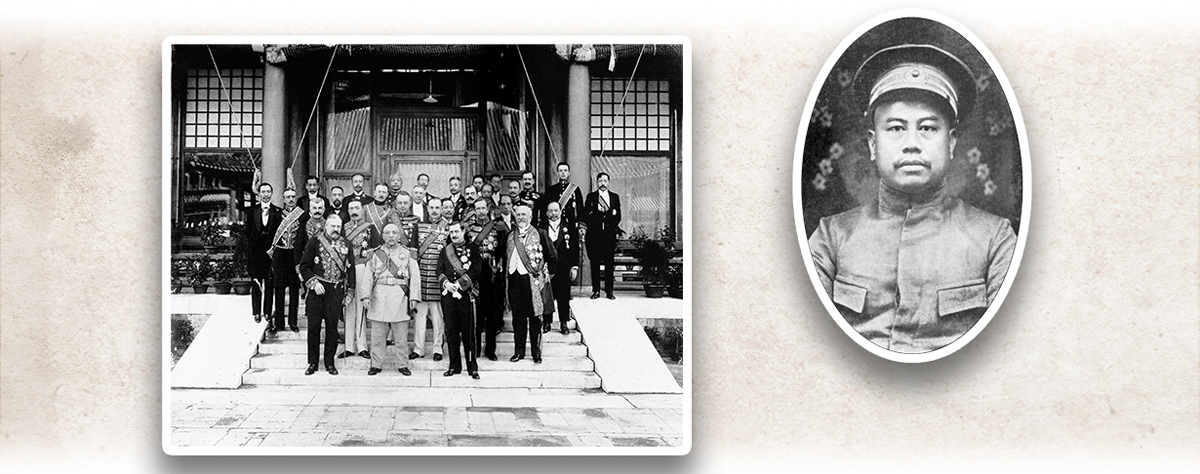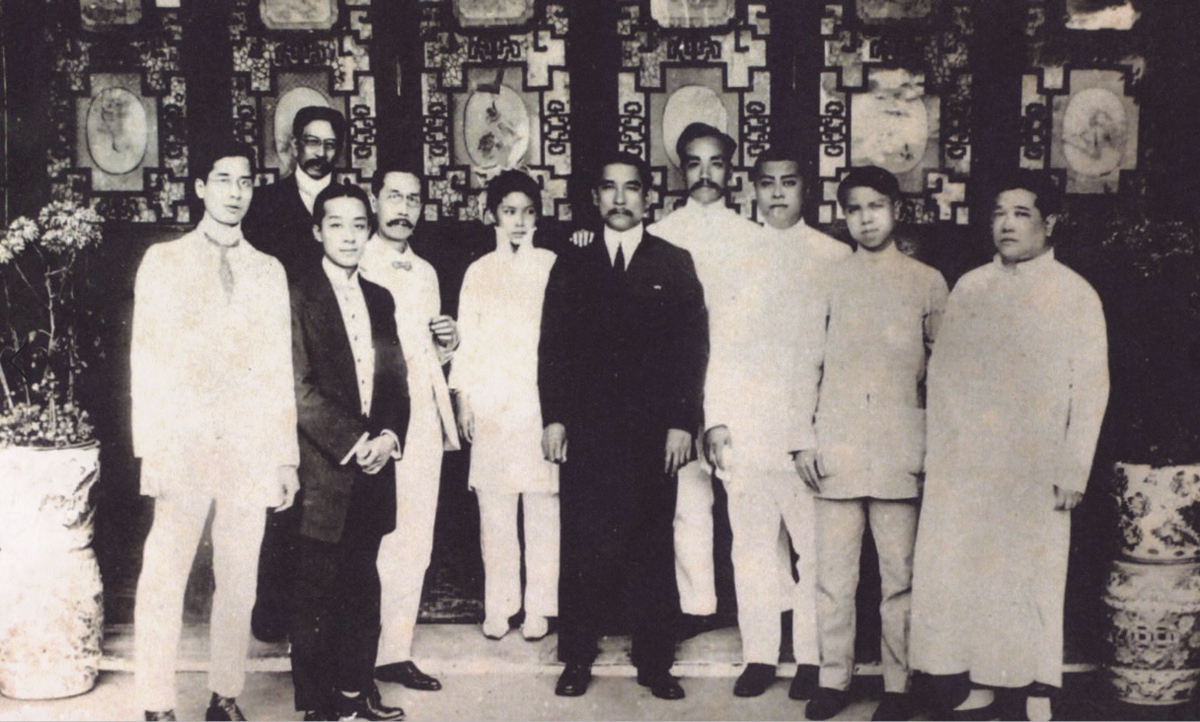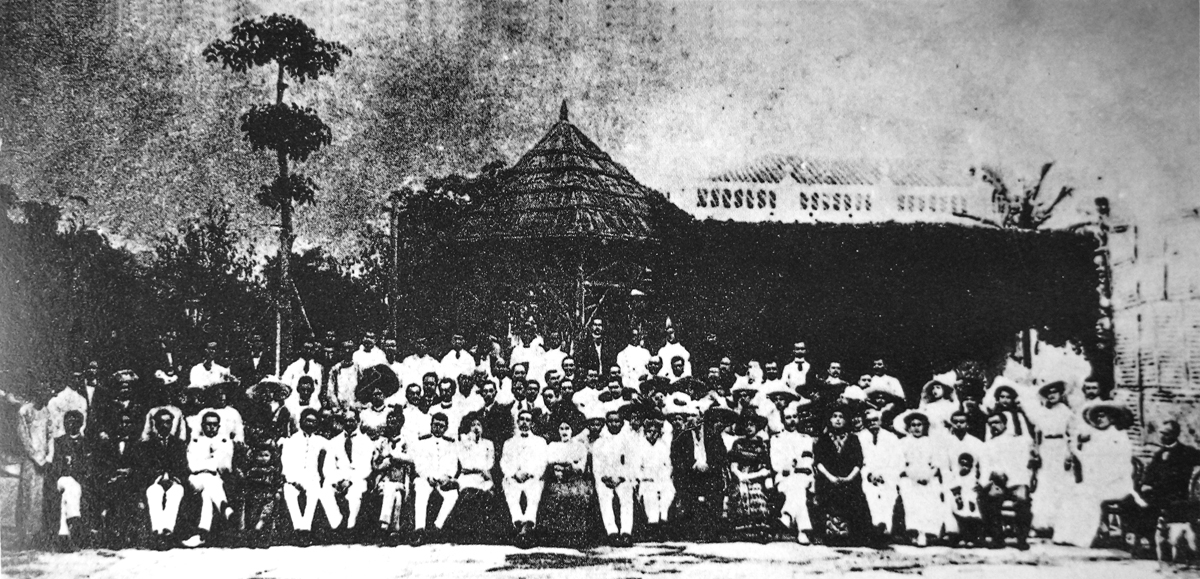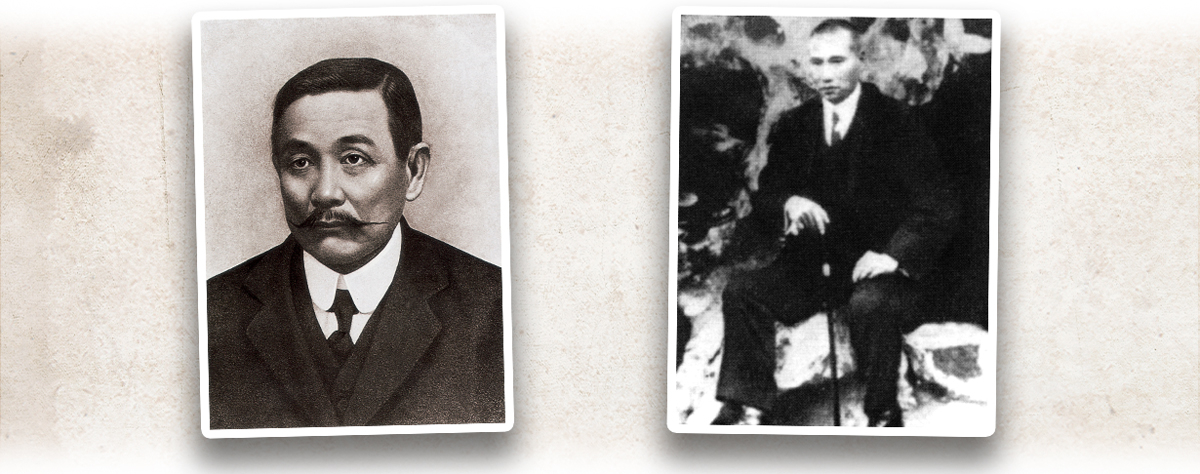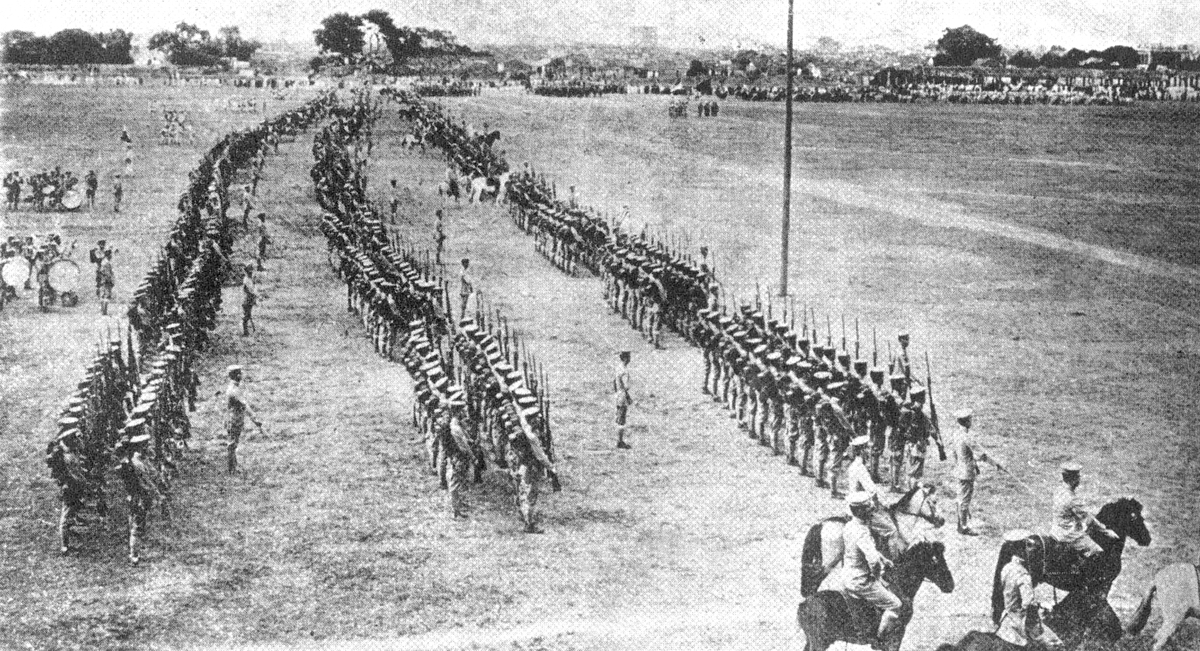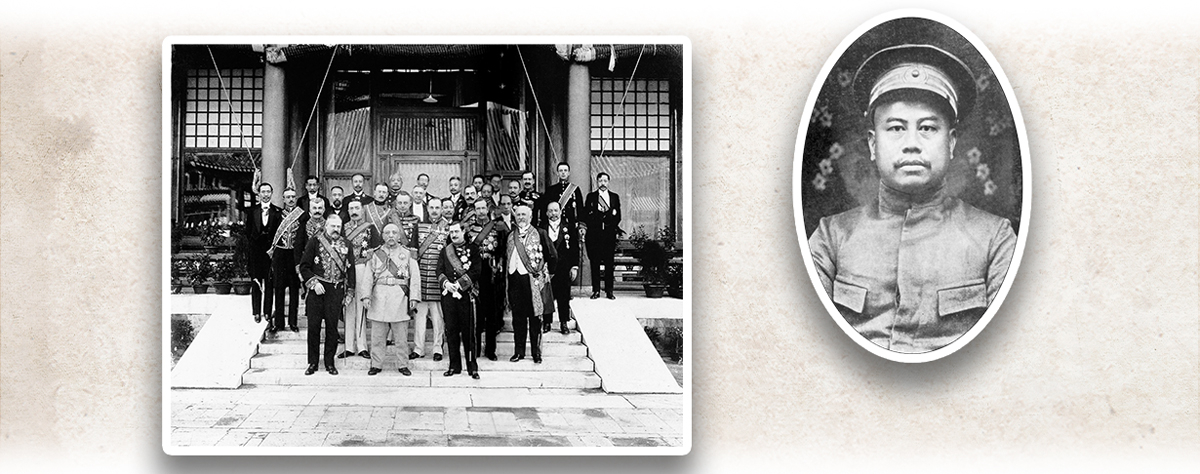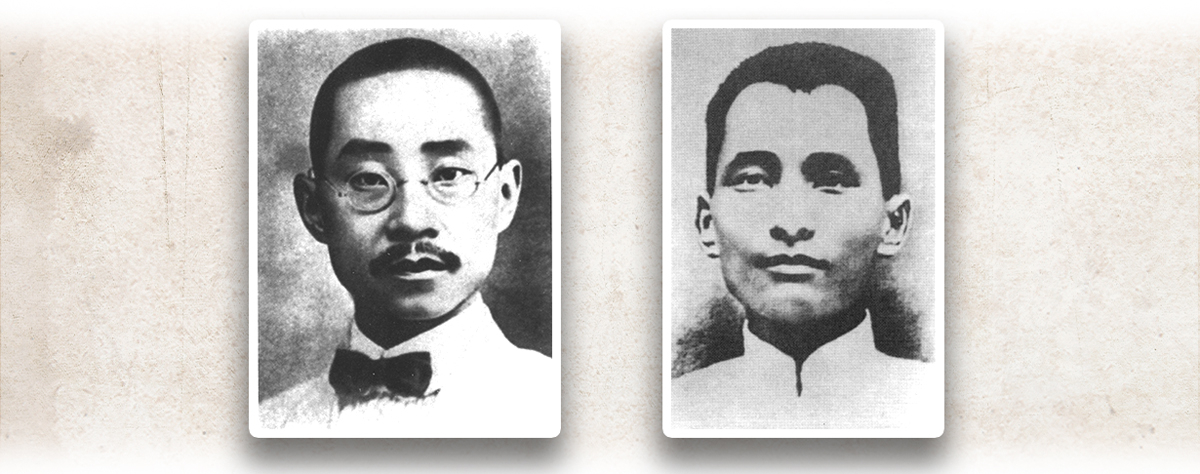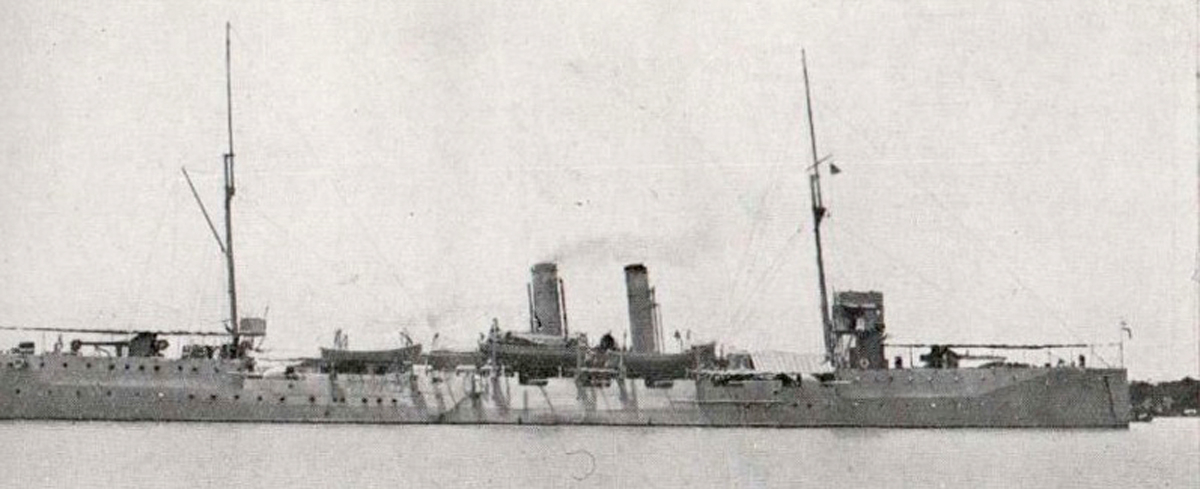The year 1912 marked the establishment of the Republic of China. Sun Yat-sen (孫中山) resigned as the Provisional President of the Republic of China in February and visited Macao (Macau) in May the same year. His successor, Yuan Shikai (袁世凱) was keen on power expansion, which met the anti-Yuan Second Revolution in 1913. The campaign failed and some revolutionaries fled to Macao, where they planned their next anti-Yuan move. Revolutionaries were active in the Guangdong (廣東)-Hong Kong-Macao region where they gained influence since the late Qing dynasty (清朝). After the Second Revolution, Yuan appointed Long Jiguang (龍濟光) as the Governor of Guangdong Province to tighten its control and crush the revolutionaries based in Hong Kong and Macao. However, the Portuguese Macao government under the First Portuguese Republic regime did not comply to Long’s repeated demands to arrest and hand over the revolutionaries. Macao thus became the revolutionaries’ base for campaigns against Yuan and Long.
|
|
What campaigns against Yuan and Long did the revolutionaries undertake in Macao? |
|
|
See answer below. |
A revolution shook Portugal in October 1910. The Portuguese Republican launch a demonstration demanding for a republic during the Brazilian president’s visit in Lisbon, Portugal, on 1 October 1910. With the support of the military, the Republicans overthrew the Portuguese monarchy on 3 October and formed a provisional government of the First Portuguese Republic on 5 October.
The power struggle among parties brought chaos to the First Portuguese Republic. This left Portuguese colonies with greater autonomy, favouring Macao’s development in the early 20th century. Left: Rua Nova de El-Rei was renamed Rua De Cinco De Outubro (5 October Street) in memory of the Portuguese revolution in 1910. Right: Avenida da República by the Sai Van Lake was built in 1911. República refers to the First Portuguese Republic.
Sun Yat-sen met with friends in Lou Lim Ioc Park (or Lou’s Garden) during his visit to Macao in 1912. (Provided by Kiang Wu Hospital Charitable Association, cited from “Macau Memory”, Macao Foundation)
Sun Yat-sen resigned as the Provisional President on 15 February 1912 and embarked on a national inspection tour as the Director-General of Railway Development. He arrived at Macao on 22 May 1912 and received a warm welcome from the local communities. The Governor of Macao Álvaro de Melo Machado and the bishop held a reception party for him at the Macau Military Club.
A photo of Sun Yat-sen and representatives from various sectors taken in Lou’s Garden in May 1912.
A photo of Sun Yat-sen and the Kiang Wu Hospital staff taken on 25 May 1912 after Sun delivered a speech. The people of Macao donated a large sum of money in the name of the hospital to support the revolution.
Sun Yat-sen negotiated with his elder brother Sun Mei (孫眉, left) and Wang Heshun (王和順, right) to settle disputes among the revolutionaries during his visit to Macao in 1912.
Wang Heshun and Chen Jiongming (陳炯明) were both revolutionaries. In the 1911 Revolution, Chen was made the deputy governor and soon the acting governor of the newly founded Guangzhou (廣州) Military Government of the Republic of China. However, he was not on good terms with Wang, who was another key figure in recovering Guangdong. Wang rose against Chen Jiongming in March 1912 but was defeated. He then fled to Macao, sought help from Sun Yat-sen’s elder brother Sun Mei to formed a revolutionary league named the Righting United League (扶正同盟會), which was later denounced by Sun and Chen after the negotiations in Macao failed. The league was dissolved in the end. Wang joined the National Protection War against Yuan Shikai in 1916. In 1922, Chen betrayed Sun in a military coup, after which Wang joined an anti-Chen campaign and fully supported Sun.
The Governor Office of Guangdong Province holding a military parade on 10 October 1912, the first anniversary of the Wuchang Uprising (武昌起義). Even after Sun Yat-sen relinquished power to Yuan Shikai, Guangdong, Hong Kong, and Macao remained a vital revolutionary base. Sun left Shanghai (上海) for Macao in June 1913. The goal of the visit was to persuade Chen Jiongming to announce Guangdong’s independence from Yuan’s administration and revolt against Yuan.
Left: Yuan Shikai and foreign envoys on his inauguration as the first official President of the Republic of China in 1913. Right: Yuan appointed Long Jiguang as the Governor of Guangdong Province after the Second Revolution.
The anti-Yuan Second Revolution launched by the revolutionaries in July 1913 failed in two months. Alarmed and determined to strengthen his power, Yuan took office as the President of the Republic of China on 10 October. He appointed Long Jiguang, who helped fight against Chen Jiongming during the Second Revolution, as the Governor of Guangdong Province to crack down on the revolutionaries in Guangdong, Hong Kong, and Macao. However, the Portuguese Macao government under the First Portuguese Republic regime did not comply to Long’s repeated demands to arrest and hand over the revolutionaries. Macao thus became the revolutionaries’ base for campaigns against Yuan and Long.
Zhu Zhixin (朱執信, left) was based in Macao between 1914 and 1916. He devised several operations against Long Jiguang, including the failed attempts to attack Guangzhou and hijack the cruiser Chao Ho (肇和艦). An arrest warrant was issued in 1914 for Teng Keng (鄧鏗, right) for his opposition to Yuan Shikai. After he arrived at Macao, he was sent to the Dong River (東江) to devise anti-Long operations.
Revolutionaries including Zhu Zhixin planned to hijack the cruiser Chao Ho as the first step of the uprising but failed.
|
|
What operations against Yuan and Long did the revolutionaries undertake in Macao? |
|
|
The revolutionaries in Macao raised several rebellions in Guangdong from 1914 to 1916. Teng Keng mobilised soldiers and civilians for revolt in counties such as Huiyang (惠陽) and Chao’an (潮安) in northeast Guangdong in 1914. Zhu Zhixin worked for the same goal in southwest Guangdong. When Yuan Shikai proclaimed himself the Emperor of the Empire of China, Zhu established forces in Macao to support the National Protection Army’s uprising. His original plan was to invade Guangzhou from Macao, but the uprising eventually took place in Shihu Village (石湖), Panyu (番禺), Guangdong, on 5 February 1916 and ended in a defeat. Apart from ground offensives, the Chinese Revolutionary Party also intended to hijack the cruiser Chao Ho on 6 March 1916 before advancing on Guangzhou. This operation also failed. |
Photo courtesy of Mr. Alex Lou, Vice Chairman of The Heritage Society (picture 2), Macao Foundation (picture 3), Fotoe (pictures 4-9), and misc. photo sources.




